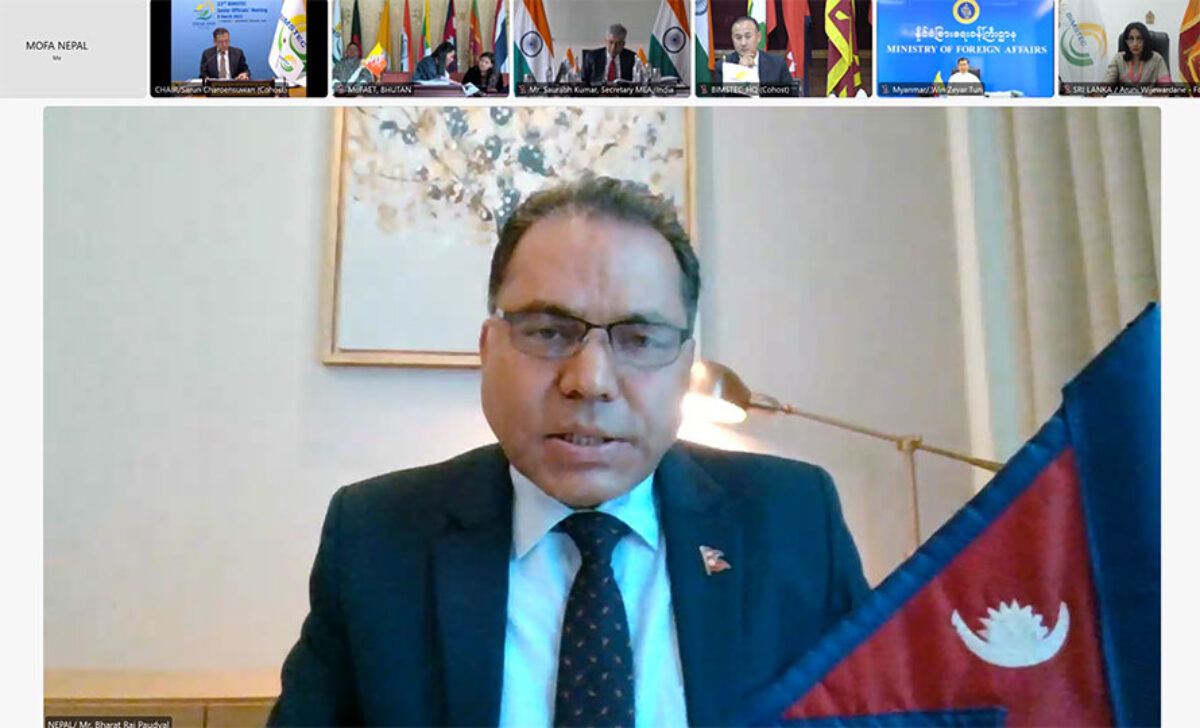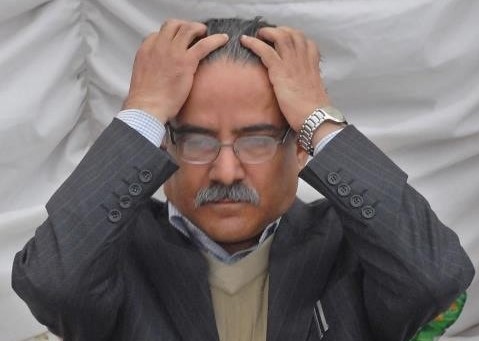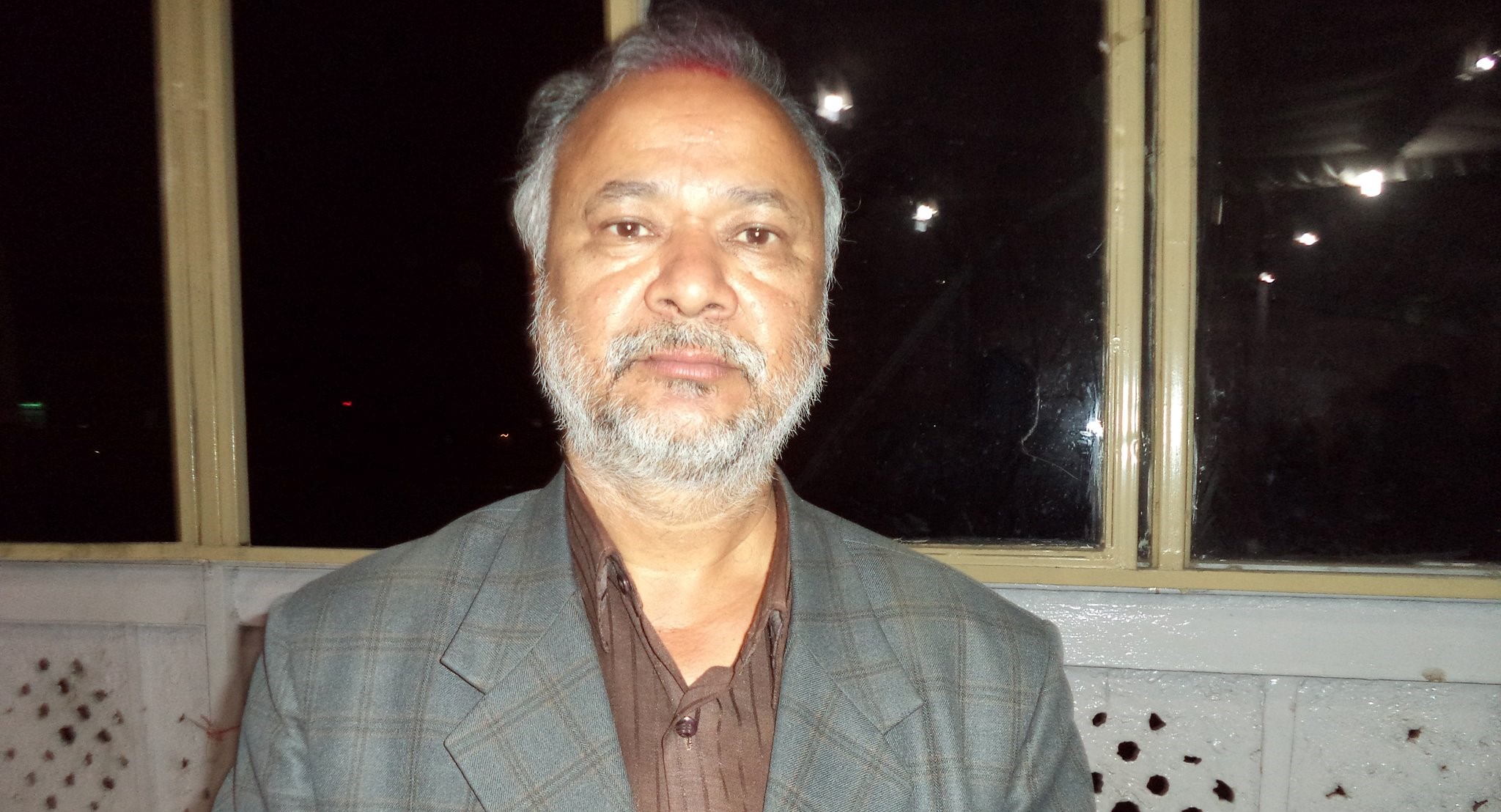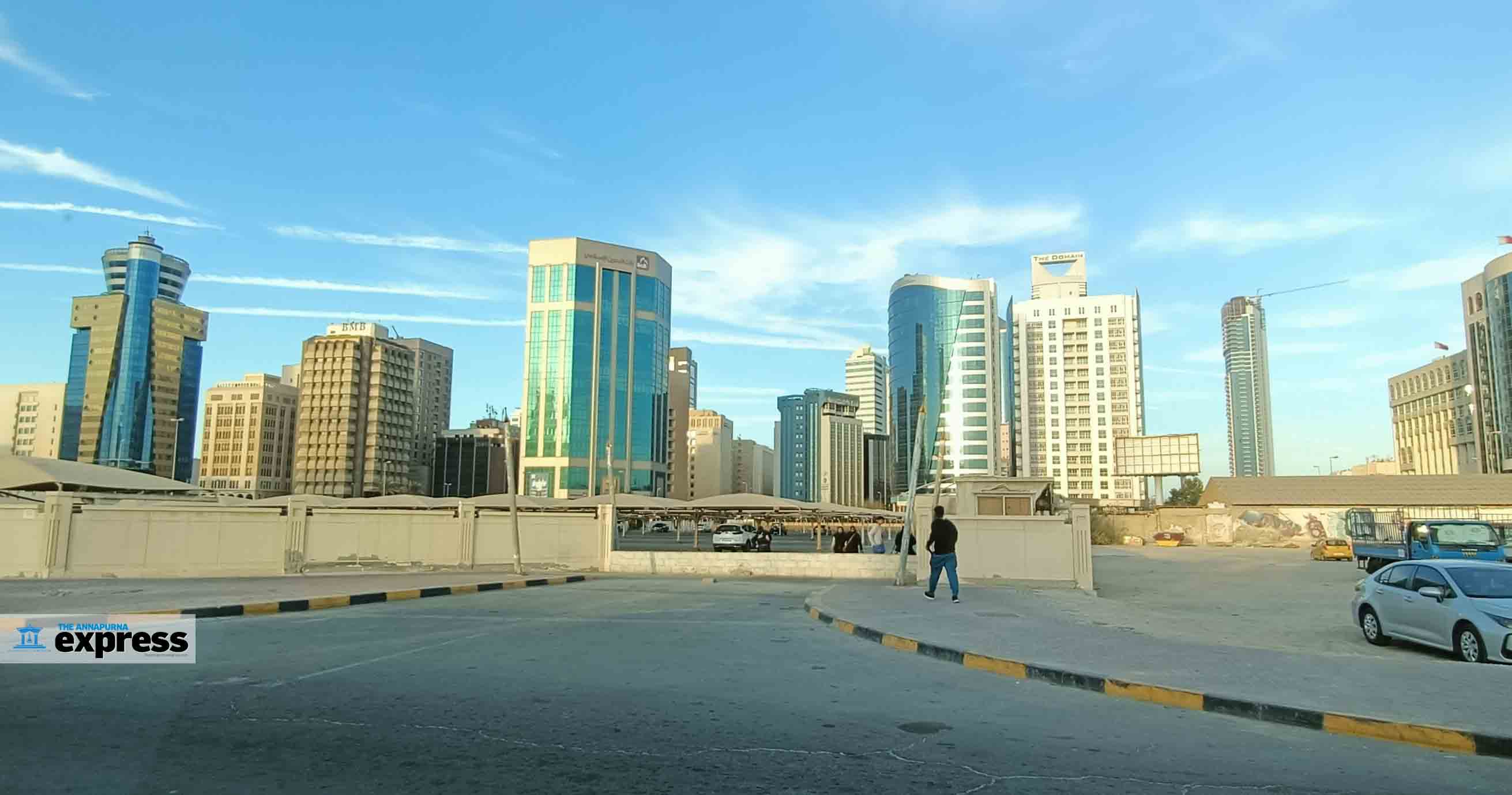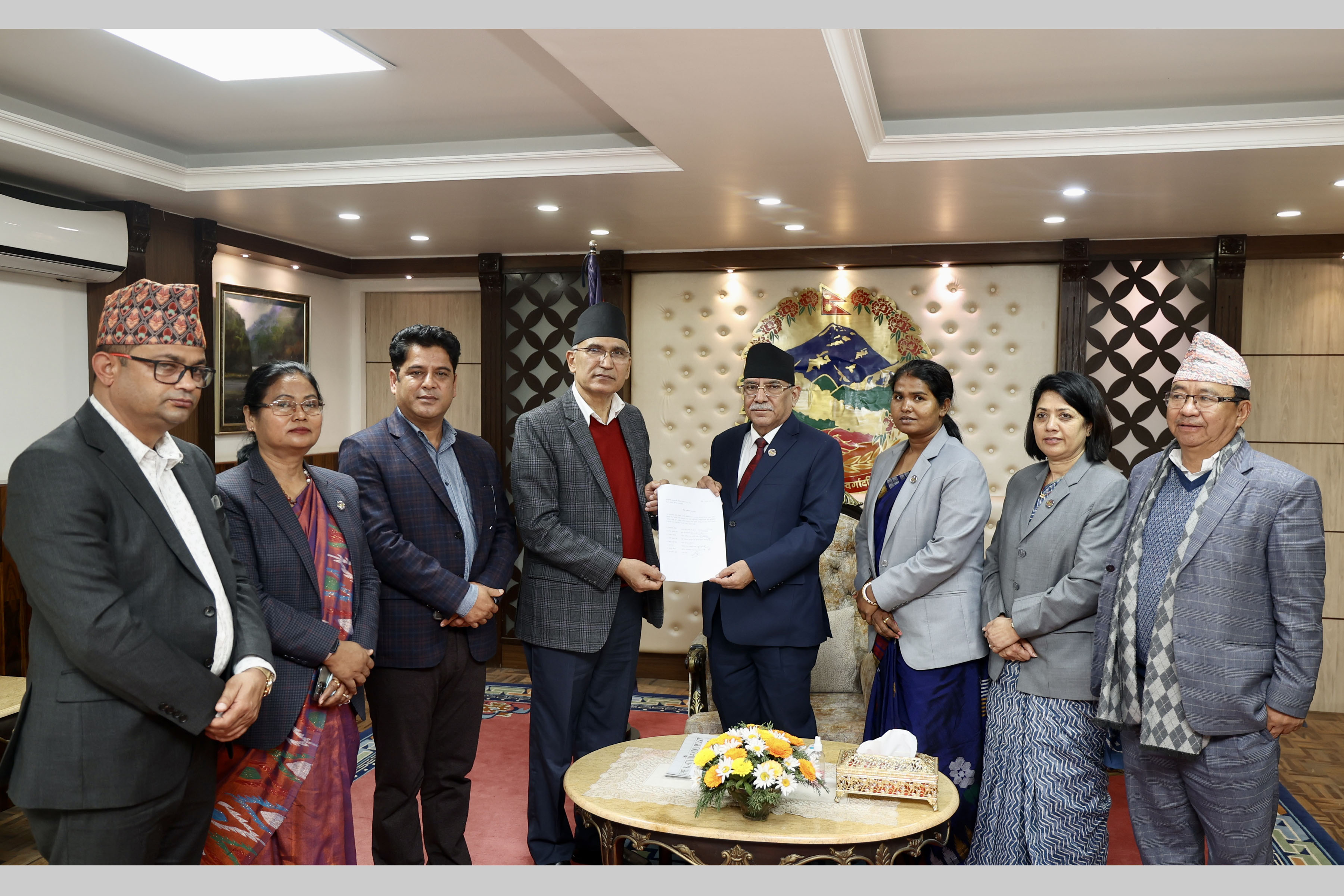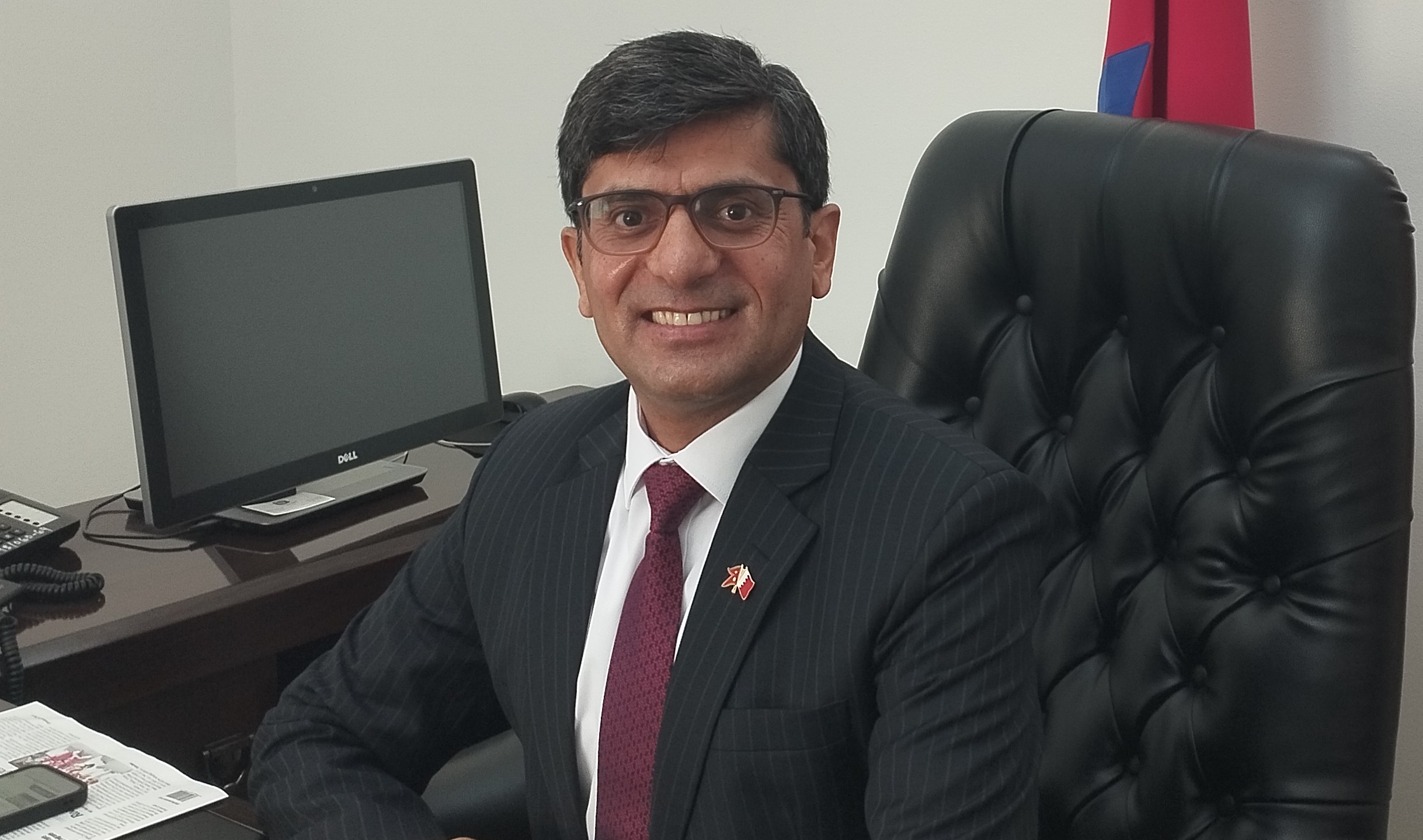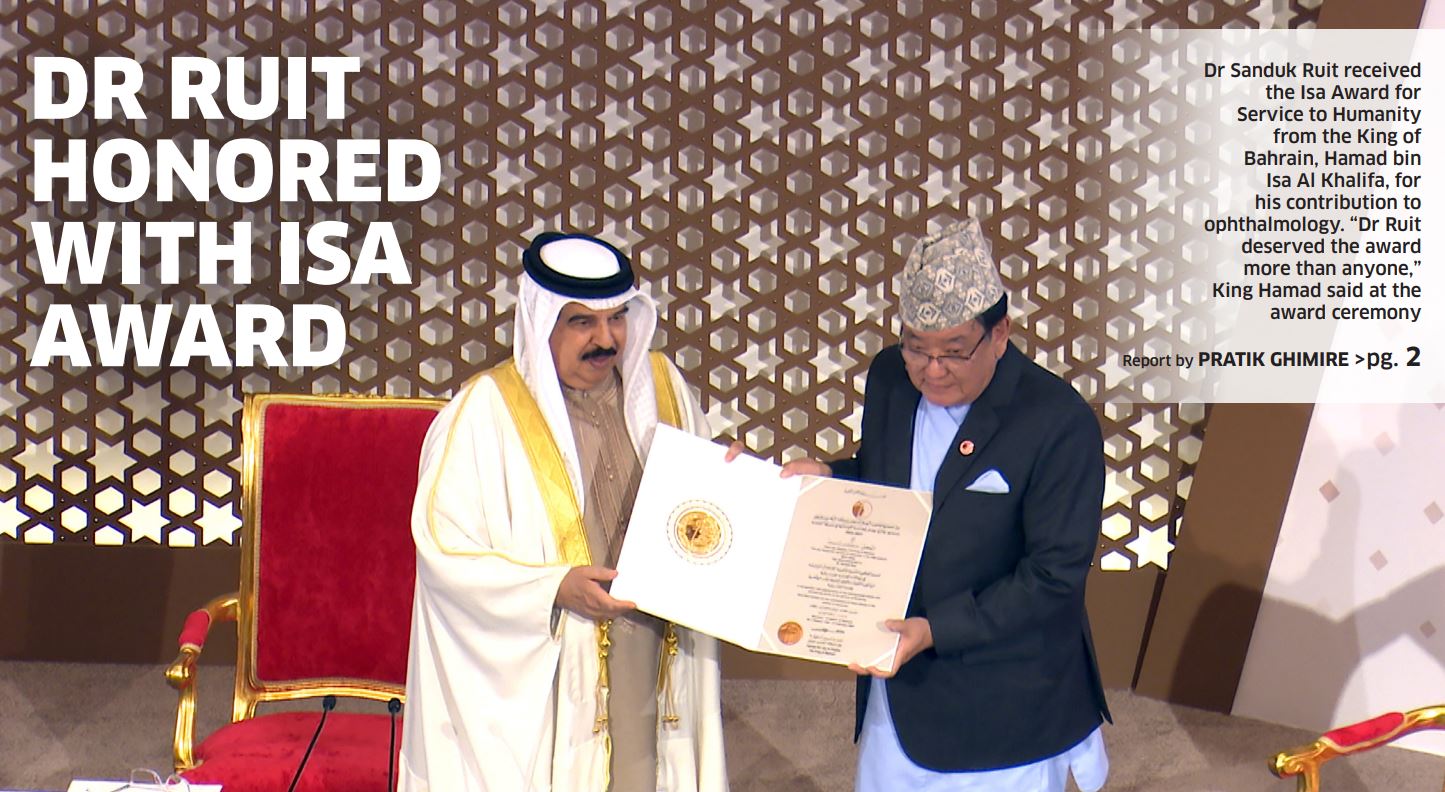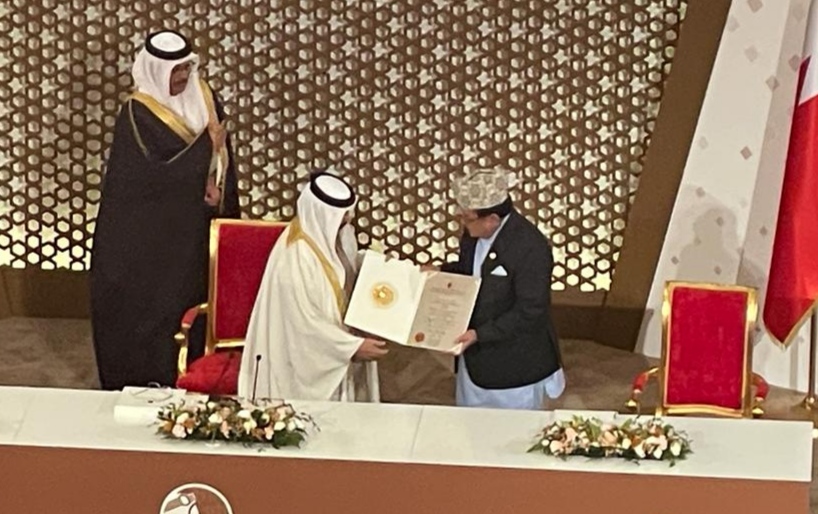BIMSTEC passes key instruments as SAARC stalls
The 19th ministerial meeting of the Bay of Bengal Initiative for Multi-sectoral Technical and Economic Cooperation (BIMSTEC) on Thursday passed some key instruments, giving a fresh impetus to the regional body.
The ministerial meeting endorsed important instruments including the BIMSTEC Bangkok Vision 2030, agreement on maritime transport cooperation, rules of procedures for several mechanisms, terms of reference for Eminent Persons’ Group, inclusion of blue economy, mountain economy and poverty alleviation under the purview of reconstituted sectors. The meeting was held virtually in Bangkok, and Nepali delegation was led by Foreign Secretary Bharat Raj Paudyal.
Addressing the meeting, Paudyal called for meaningful regional cooperation to deal with the defining challenges of our times such as climate change, energy crisis, food insecurity and the large-scale pandemic. Recalling the fourth BIMSTEC Summit held in Kathmandu in 2018, which aptly prioritized institution building of BIMSTEC, Paudyal underlined the need for conscious, credible, and concerted actions to achieve a more resilient, prosperous, and sustainable Bay of Bengal region.
Paudyal also updated on the progress achieved in the Sector of ‘People-to-People Contact’ that is being led by Nepal. He also informed the meeting on the efforts made toward creating platforms for people-to-people engagements in the BIMSTEC region, such as the Parliamentarians and Speakers forum, and separate forums of entrepreneurs, universities, and researchers, etc.
Over the past few years, BIMSTEC has gathered momentum, while another regional body, South Asian Association for Regional Cooperation (SAARC), remains stalled since 2016 over the India-Pakistan dispute.
Though Nepal is taking initiative to revitalize the SAARC process, other member countries, particularly India, are not serious about it. Preparations are underway to hold the sixth BIMSTEC summit but the future of SAARC is uncertain.
Loose lips sink ships
Prime Minister and Maoist party leader Pushpa Kamal Dahal is in trouble for his self-incriminating speech three years ago, where he claimed responsibility for 5,000 lives lost during a decade-long insurgency. Advocates Kalyan Budhathoki and Gyanendra Aaran on Tuesday filed separate petitions at the Supreme Court demanding legal action against Dahal.
“We are registering this case to bring to justice the people responsible for the atrocities and injustices committed against civilians during the conflict period,” said Budhathoki.
Aaran added they were compelled to knock on the door of the Supreme Court after their repeated calls to address the flaws seen in the transitional justice process went unheard. “We have filed the case on behalf of a handful of conflict-affected families, but in reality we are representing the families of 5,500 people killed at the hands of Maoist insurgents.”
Hearing on the case has been scheduled for Thursday. “Prachanda is not free to kill, nor order others to kill,” read one of the petitions. “His public proclamation of taking 5,000 lives is unlawful, so he must be arrested and prosecuted as per existing law.”
Maoists on the defense
The case against Prime Minister Dahal has rattled CPN (Maoist Center) and its breakaway parties. They issued a joint statement on Tuesday, saying they stand against any activity in contravention of the Comprehensive Peace Accord.
“Matters related to transitional justice must be taken through the Truth and Reconciliation Commission. Any act that goes against the transitional justice process will not help in the implementation of the peace accord,” reads the statement. The statement was signed by the Maoist Center, Nepal Samajbadi Party, NCP (Revolutionary Maoist), Nepal Communist Party, CPN (Majority), Scientific Socialist Communist Party, CPN (Maoist Socialist), and Maoist Communist Party Nepal.
National rights body concerned
The National Human Rights Commission also issued a statement on Tuesday, calling on the government, political parties and other stakeholders to conclude the transitional justice process at the earliest. It asked all concerned parties to amend the transitional justice laws in accordance with international standards, and as instructed by the Supreme Court. The national rights body also raised concerns over the objections raised by some political parties concerning the case filed by the conflict victims in the apex court.
“Though transitional justice has a different set of rules and procedures, it is still unjust to bar conflict victims from gaining access to the court of law for justice,” said the statement. The commission said it is worrisome that Nepal’s transitional justice has not concluded even more than 16 years after the signing of the Comprehensive Peace Accord.
Raghuji Panta: Dahal has a shifty personality
CPN-UML has pulled out of the Pushpa Kamal Dahal-led coalition government in the wake of differences over the presidential candidate, for which a vote is due on March 9. This will likely create a new political coalition, including CPN (Maoist Center), Nepali Congress, and CPN (Unified Socialist). Pratik Ghimire of ApEx talked to Raghuji Panta, parliamentarian and UML leader regarding the current political scenario.
What’s your take on the latest political developments?
Nepali political leaders never follow their ideology, values, beliefs, plans, and policies and they never work for national interest is what Prime Minister Dahal showed recently. He quit the political alliance formed barely a couple of months ago. Why did he do so? His behavior and the new coalition will only deepen political instability.
This is not a new alliance though. The Congress, Maoists, and other parties were together till the Nov 20 polls. Did they deliver quality service to the people? No. This coalition got embroiled in plenty of scams like the involvement of an unauthorized person in budget preparation. So, what should people expect from them?
Why did Dahal betray the UML?
Dahal is a shifty person. Previously also, he had betrayed almost all political parties for petty gains. This time again, this is all for his benefit. Not only will this hamper the country but also his party.
Do you see an external role in the current turmoil?
The coalition, which included the UML and other parties, had more patriotic agendas. It is now proved that international powers don't like a left-centric government and they wanted the Congress in power by any means. There certainly is an external role in this political change, but we have to keep in mind that external forces can’t act without our political leaders. The external forces have used our political actors. We must criticize external interference in domestic politics, but our politicians must also work in the interest of the nation. They should ask external forces not to interfere in internal politics and convey a message that we are capable of solving our problems on our own.
Any chance of a Congress-UML alliance?
As of now, we have no such interest. We are determined to play the role of a perfect opposition by respecting the will of the people.
What is the UML’s grassroots mission? What are its objectives?
This mission has a simple meaning. We want to involve more youths in the party as they are our future. Being one of the large political parties, it is difficult to run the party’s affairs smoothly. Missions like this one help us connect with the people at the grassroots and help solve many problems. This mission also aims to bridge the gap between youths, laymen, and the party leadership, enabling the party to work for the people more effectively.
What I saw in Bahrain (Photo Feature)
Manama: The Kingdom of Bahrain invited a select group of journalists to participate in an event that was going to be held to honor Nepali ophthalmologist Dr Sanduk Ruit with the Isa Award for Service to Humanity. I happened to be one of the lucky seven who went to Bahrain. 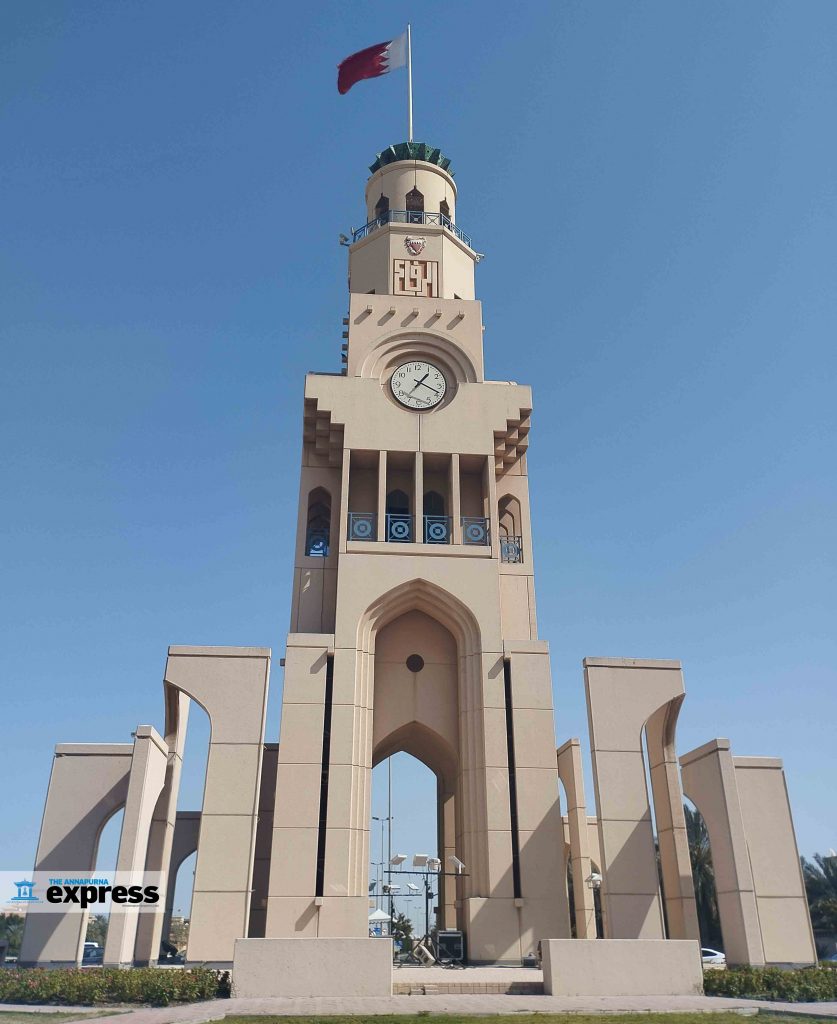
An international trip, even though for work, is fun as you get to visit new places, see new things, meet new people, taste new food and experience new cultures. It was exciting for me not only because it was my first international trip but also because it was my first-ever flight experience. 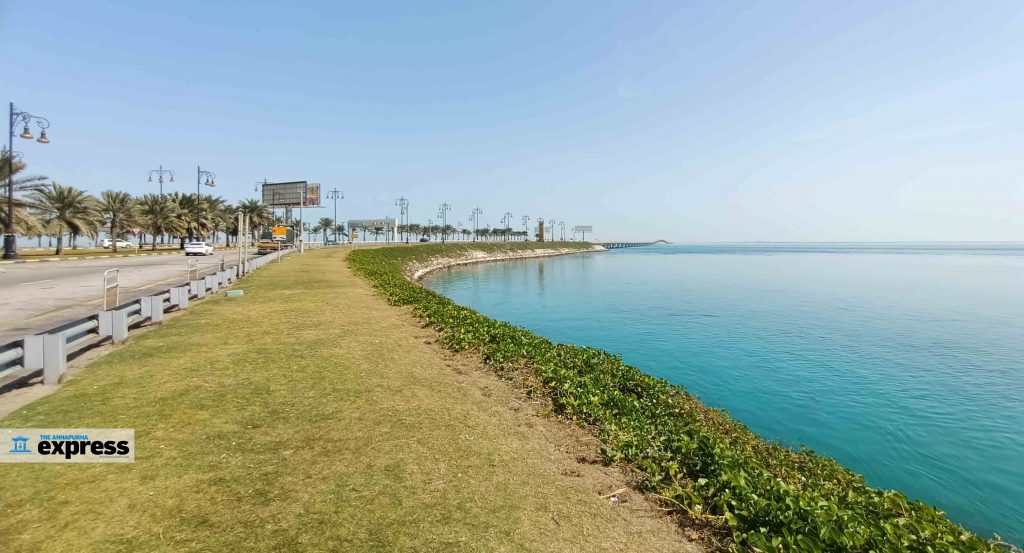 Bahrain is an island country in West Asia comprising a small archipelago made up of 50 natural islands and 33 artificial islands. It spans some 760 square kilometers, and is the third-smallest nation in Asia. In light traffic, you can easily move from one corner of Bahrain to another within 20 minutes.
Bahrain is an island country in West Asia comprising a small archipelago made up of 50 natural islands and 33 artificial islands. It spans some 760 square kilometers, and is the third-smallest nation in Asia. In light traffic, you can easily move from one corner of Bahrain to another within 20 minutes. 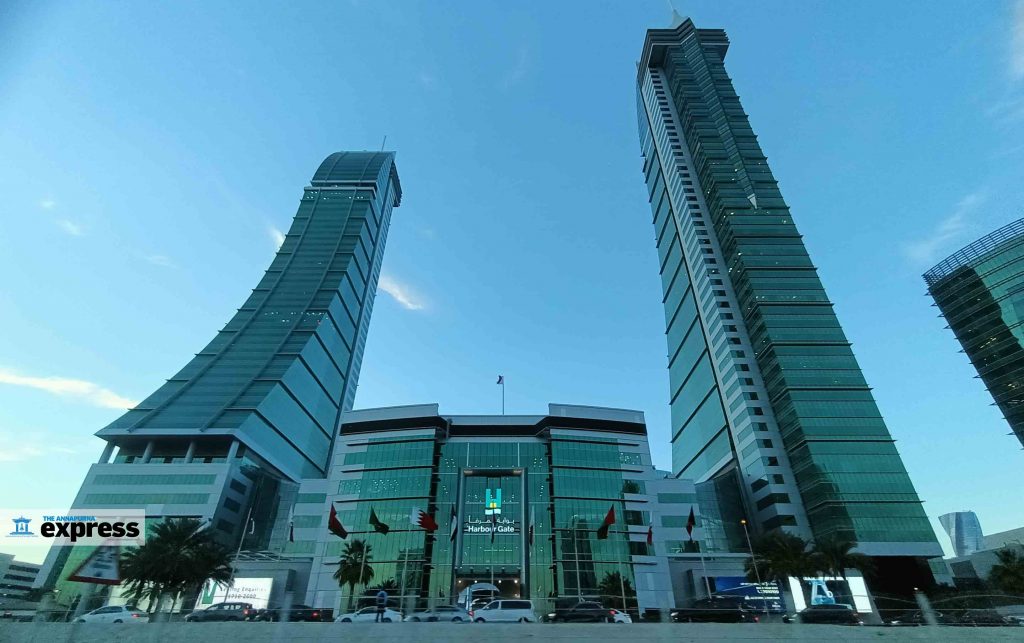 Upon landing in Bahrain on February 19, I started comparing the city bathed in night-light with Nepal. I could see just how different it was from the moment I stepped off the plane. There’s a lot we can and need to learn from Bahrain.
Upon landing in Bahrain on February 19, I started comparing the city bathed in night-light with Nepal. I could see just how different it was from the moment I stepped off the plane. There’s a lot we can and need to learn from Bahrain. 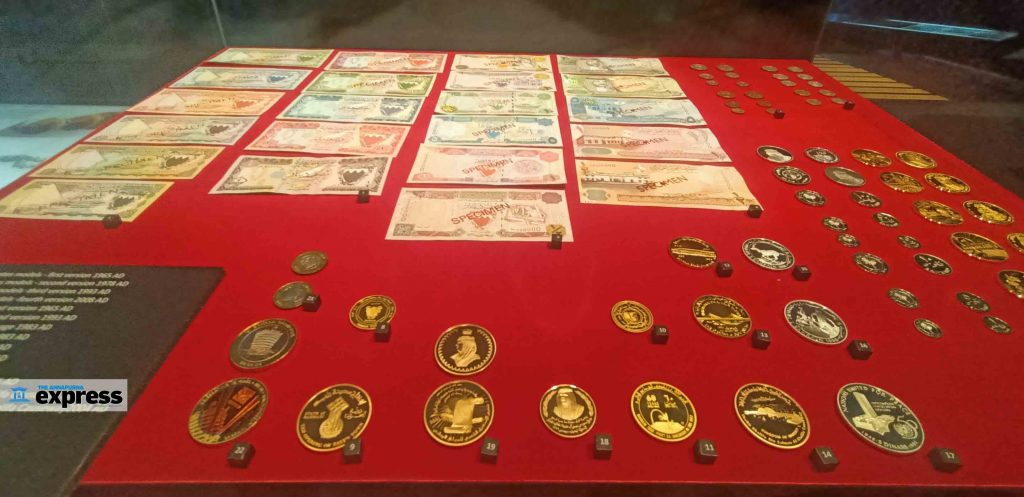 Though located in one of the world’s main oil-producing regions, Bahrain has a handful of small oil wells. Among the gulf nations, Bahrain was the first to find petroleum reserves. We visited the historic well, now converted to an ‘Oil Museum’.
Though located in one of the world’s main oil-producing regions, Bahrain has a handful of small oil wells. Among the gulf nations, Bahrain was the first to find petroleum reserves. We visited the historic well, now converted to an ‘Oil Museum’. 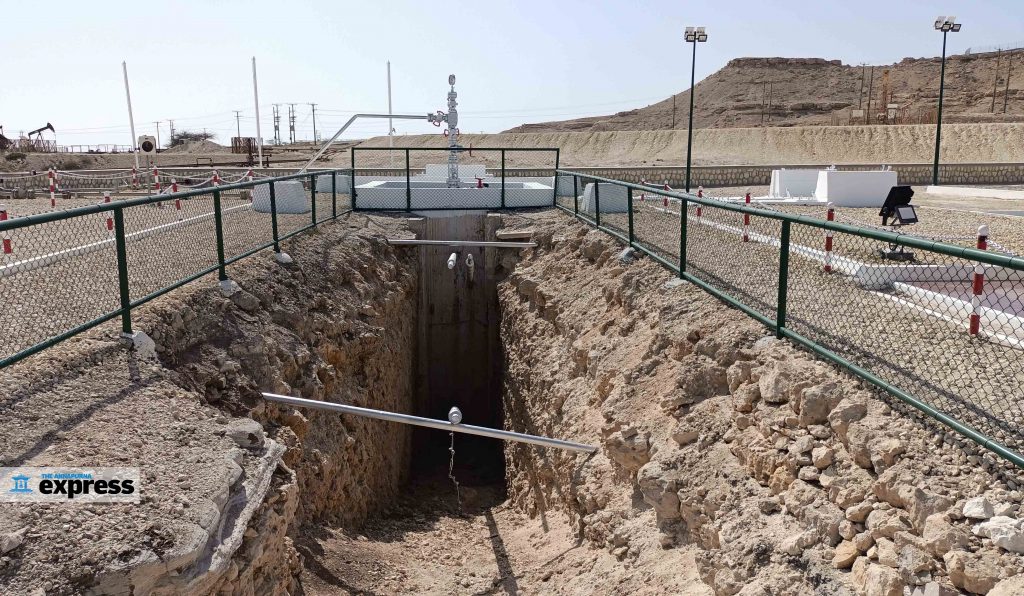 I thought, being an Islamic state, Bahrain might have a strict society, but I found it to be completely different. A strikingly modern city, Manama, Bahrain’s capital, is relaxed and cosmopolitan and is a favorite destination for visitors from the neighboring Saudi Arabia. On weekends, crowds of Saudis come into the city to enjoy its restaurants and bars and the nightlife, which is rare in their country.
I thought, being an Islamic state, Bahrain might have a strict society, but I found it to be completely different. A strikingly modern city, Manama, Bahrain’s capital, is relaxed and cosmopolitan and is a favorite destination for visitors from the neighboring Saudi Arabia. On weekends, crowds of Saudis come into the city to enjoy its restaurants and bars and the nightlife, which is rare in their country. 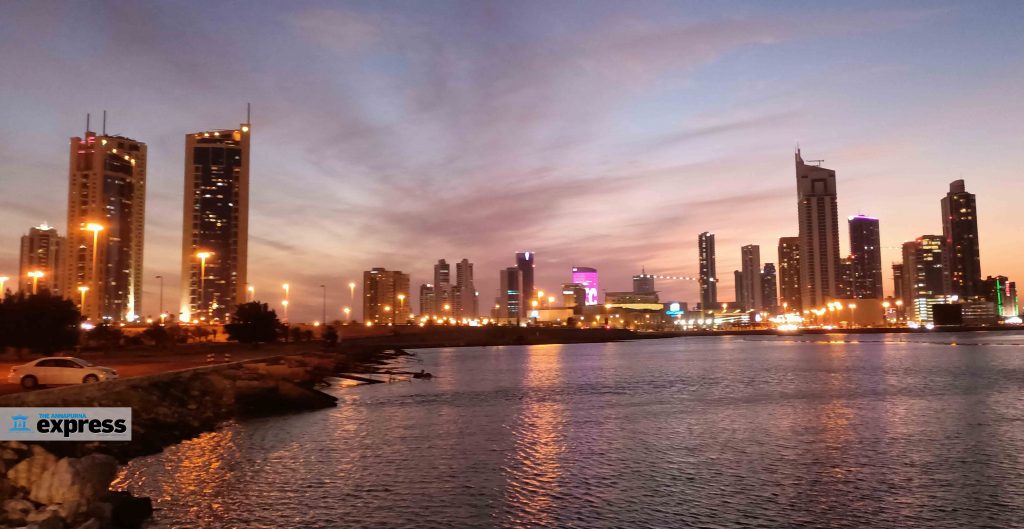 However, traffic jams are an issue in Bahrain. On the weekend, congestion gets heavier than in Kathmandu. It could be because the small island country has no metros and fewer public buses and everyone eligible to drive has their own car. Many of them even have two—separate ones for office and personal use.
However, traffic jams are an issue in Bahrain. On the weekend, congestion gets heavier than in Kathmandu. It could be because the small island country has no metros and fewer public buses and everyone eligible to drive has their own car. Many of them even have two—separate ones for office and personal use. 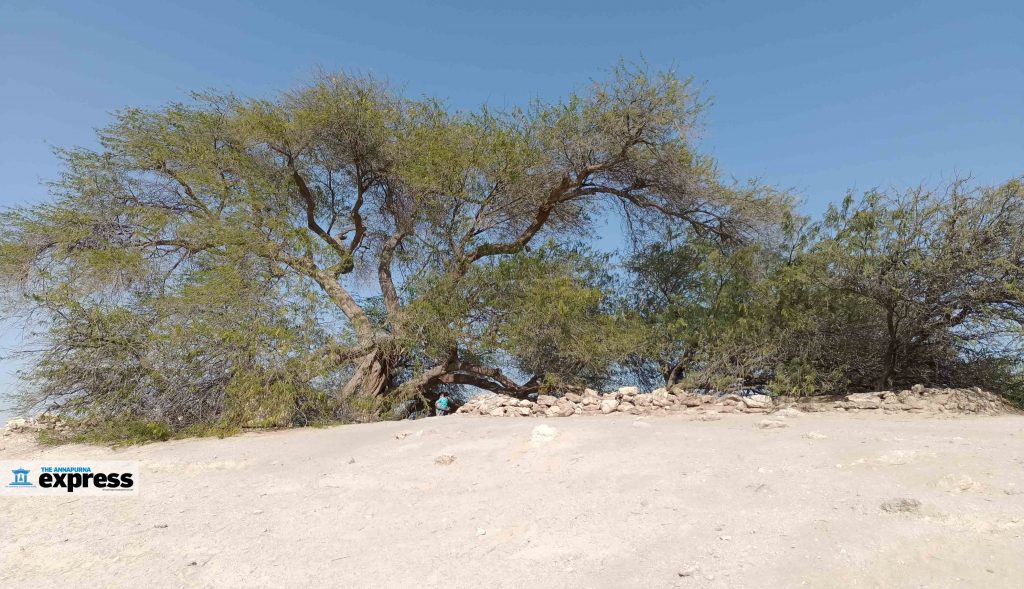 The other places I visited were The King Fahd Causeway, Tree of Life, Bahraini Women’s Monument ‘Athar’ and the National Charter Monument. The Tree of Life is a 9.75 meters high Prosopis cineraria tree that has been standing on a hill in a barren area of the Arabian Desert for 400 years!
The other places I visited were The King Fahd Causeway, Tree of Life, Bahraini Women’s Monument ‘Athar’ and the National Charter Monument. The Tree of Life is a 9.75 meters high Prosopis cineraria tree that has been standing on a hill in a barren area of the Arabian Desert for 400 years! 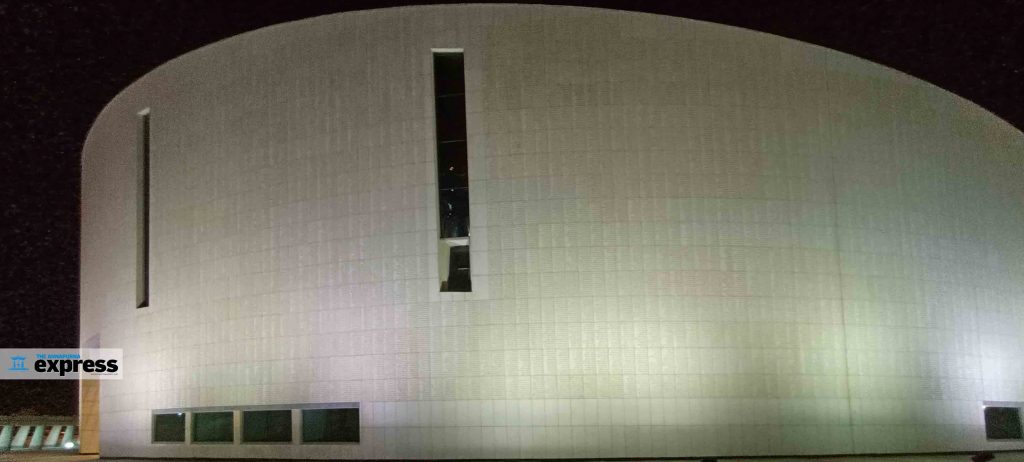 What amazed me the most was the charter monument. It was commissioned by King Hamad al-Khalifa as a ‘gift to the people’ of Bahrain and to honor the National Charter (Bahrain’s Constitution). This building explores concepts and representations of national history and identity in a series of vivid, dramatic visitor experiences. Over 220,000 names are engraved on the walls of this monument—of those who voted during the promulgation of Bahrain’s first Constitution.
What amazed me the most was the charter monument. It was commissioned by King Hamad al-Khalifa as a ‘gift to the people’ of Bahrain and to honor the National Charter (Bahrain’s Constitution). This building explores concepts and representations of national history and identity in a series of vivid, dramatic visitor experiences. Over 220,000 names are engraved on the walls of this monument—of those who voted during the promulgation of Bahrain’s first Constitution.  There are many takeaways from my Bahrain trip. Apart from being a fun experience, it also opened my eyes to how impactful government policies and infrastructural development plans can be to create a wonderfully equipped and thus habitable state.
There are many takeaways from my Bahrain trip. Apart from being a fun experience, it also opened my eyes to how impactful government policies and infrastructural development plans can be to create a wonderfully equipped and thus habitable state. 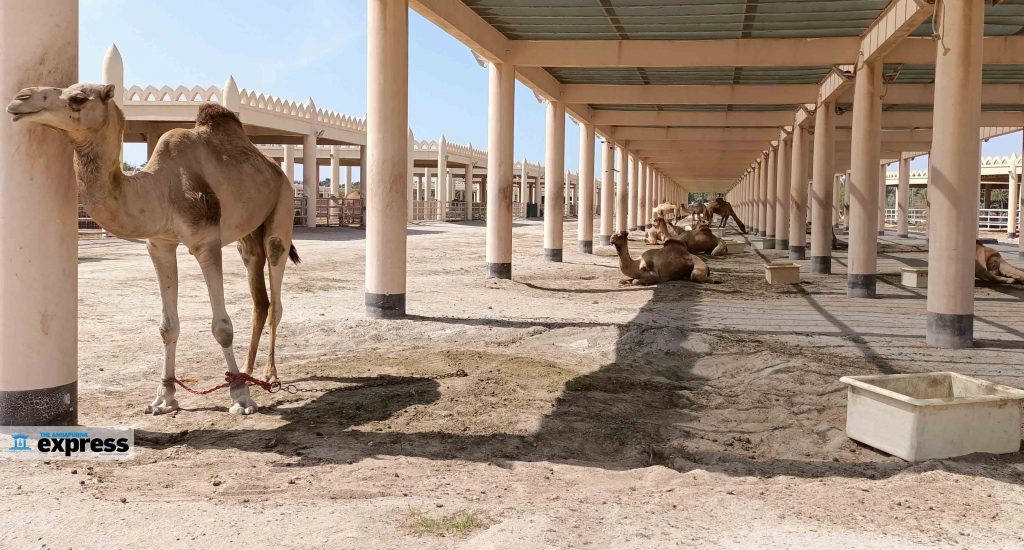

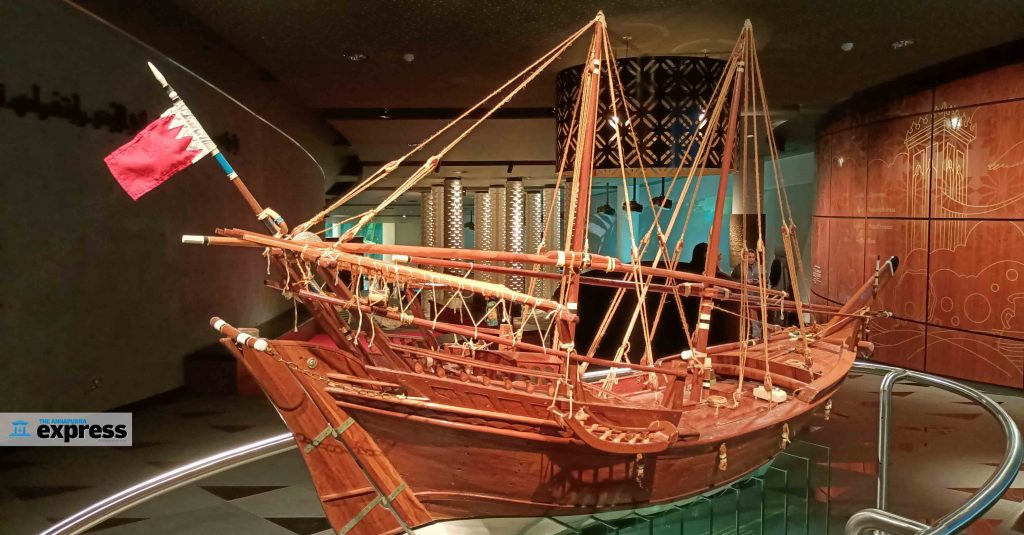
Dahal loses key ally: Time for another floor test
CPN-UML has pulled out of the Pushpa Kamal Dahal-led coalition government over a presidential candidate dispute. Days after the Rastriya Prajatantra Party quit the government, the UML ministers also tendered their resignation. UML was the coalition linchpin that elevated Dahal to power for the third time on Dec 25 last year. But the coalition broke down within just two months after the prime minister refused to back UML’s presidential candidate.
With UML and RPP out of the government, and another coalition partner, Rastriya Swatantra Party, having previously recalled its ministers over the citizenship controversy of its leader Rabi Lamichhane, 16 ministries are now without ministers. As per article 100 of the constitution, the prime minister should now take a vote of confidence from Parliament.
The article states: “In case the political party, which the Prime Minister represents, is divided or a political party in coalition government withdraws its support, the Prime Minister shall table a motion in the House of Representatives for a vote of confidence within 30 days.”
Experts, however, say that Dahal doesn’t have the luxury of taking 30 days to take Parliament’s floor test, as the major parties that supported him have pulled out from his government. Lamichhane’s RSP is the only party that has not decided to withdraw its support to the Dahal government, despite recalling its ministers.
Constitutional expert Bipin Adhikari says this is not a normal situation for the prime minister. “Dahal’s major coalition partners have quit, so he must take the vote of confidence without any delay.” Without the trust vote, Adhikari adds, the prime minister, who has essentially lost the majority, cannot engage in major parliamentary business.
Dahal was appointed prime minister with the support of 169 members in the 275-strong House of Representatives. The UML (78) and RPP (14) together made 92 votes. Dahal’s party had secured only 32 seats in the parliamentary election held on November 20 last year. Without the UML and RPP support, his government has been rendered into a minority.
But with the main opposition, Nepali Congress, and other fringe parties behind Dahal, he is confident about saving his premiership. Preliminary talks are already under way to form a new coalition.
Tirtha Raj Wagle: Operation of direct flights could boost ties
Nepal and the Kingdom of Bahrain have been enjoying cordial ties ever since the two countries established official diplomatic relations in 1977. Over the years, Bahrain has become an important destination for Nepali migrant workers. Pratik Ghimire of ApEx caught up with Tirtha Raj Wagle, Nepali ambassador to Bahrain in his office, to talk about the condition of Nepali workers and various aspects of Nepal-Bahrain bilateral relationship.
What is the Nepal Embassy doing for Nepalis living in Bahrain?
Bahrain has about 21,000 Nepalis. Most of them are working low and semi-skilled jobs. For their supervision, we keep a close connection with them and discuss their issues. Whenever there are issues, such as unpaid wages or medical help or over time payment, we talk with the concerned employers. These issues are usually solved at our request.
We do follow-ups to make sure the workers’ problems are being addressed. If that doesn’t work, we take up the issue with the Labor Ministry and Labor Market Regulatory Authority. We also coordinate with manpower companies and the Nepal government if the Nepali workers are sent here without proper agreements.
What is the current condition of Nepalis working in Bahrain?
I have found that Nepalis in Bahrain are happy with their living and working conditions here. The Bahrain government and the people also love Nepalis for their hard work, dedication and honesty. The market for jobs, yet isn’t huge in Bahrain. The population here is roughly about 1.5m, where half of them are foreigners and around 21,000 are Nepalis. The Bahrain government has a policy where skilled laborers are given priority. So, greater job opportunities are available for people with skill sets, education and language. Currently, Nepal is only supplying low skilled laborers.
For Nepalis working low-skilled jobs, how is the embassy making sure they are not deprived of their basic rights?
The embassy contacts the respected companies and conducts inspection visits of their workplace. We also visit the living quarters of Nepali workers to make sure they are living well. If we notice any issue, we send a complaint to the authorized company and the problem will be sorted out. But we do not always get permission from companies to inspect the living quarters and workplaces, which is a problem we are trying to solve with the cooperation of the Bahrain government authorities.
For the management of the labor market, there was a labor agreement between Nepal and Bahrain. How is that helping Nepali workers?
We had a labor agreement in 2008. Nepal and Bahrain have also agreed to conduct routine technical level conferences of their labor ministries. So far, our focus has been on insurance and workers’ safety, as well as providing necessary training to the workers. The areas of priority are conducting orientation programs and training for the new workers. The two countries have not yet agreed on a minimum salary range for Nepali workers.
But we are lobbying with the Bahraini government on this. I can’t say what will be the progress as there have not been any meetings recently regarding the minimum salary range. But from our side, we have recommended bacis salary for the workers. For instance, 100 BD for unskilled, 120 BD for semiskilled, 150 BD for skilled and 550 BD for professionals. We have also recommended certain allowances for all type of workers.
Has there been any agreement on managing the investments made by Nepalis?
Few Nepalis have been conducting small businesses in Bahrain. In order to improve their business structures, they want an exchange of business delegations or some kind of agreement. The Nepali Embassy and the government are in support of business delegation exchanges, as well as investment agreements and double taxation avoidance agreements. But as of now, Nepal and Bahrain have not reached any such agreements. But we are planning to hold a bilateral conference to discuss various areas of labor, tourism, trade, education and hospitality.
As of now, due to the lack of business agreement between both countries, any Nepali who wants to invest, has to ensure that they can only keep a financial share of 49 percent. 51 percent share should be of a local Bahraini citizen. We are in regular communication with both governments to conduct a diplomatic consultation of foreign ministry-level meetings or at least foreign secretary-level meetings.
There are reports about establishing ‘Bahrain Peak’ in Nepal. How is the plan coming along?
The Royal Guard Team, which is under the Bahrain Defense Force, has successfully climbed many mountains of Nepal including the Sagarmatha, Manaslu, Lobuche and Ama Dablam. So Bahrainis have a close affinity with Nepal, particularly our mountains. This has helped in the marketing of Nepali mountains and hills in Bahrain.
A local government of Gorkha and the local people have agreed to name one of the hills in Gorkha as ‘Bahrain Peak’. I personally am unaware about the latest development on this matter, but I am sure it is being taken positively by all the concerned parties.
Dr Sanduk Ruit has just won the Isa Award for Service to Humanity. What message has it given to the Nepalis in Bahrain?
Every Nepali in Bahrain is proud of Dr Ruit for winning the prestigious award and representing Nepal. They expect to see Dr Ruit visiting Bahrain for a health exchange program and further the ties between the two countries. This has also opened Nepal for health tourism.
Nepal has brought different schemes for foreign investment. Which of the sectors do you think Bahrain should invest in?
Currently, the tourism sector is the focus of the Bahrain government. They are also interested in sports tourism, youth activities, ecotourism, and hydropower generation. But they need more planning and visualization. I have assured them that our service and other sectors are also good to invest in and have also asked them to visit Nepal and study more on it.
Nepal and Bahrain lack direct flight connection. Is the Nepali Embassy doing anything about this?
The lack of direct flight has created problems. In order for Nepalis to run their business, to import local products from Nepal, direct flight would have made it so much easier. For example, during our national days, we have shown our organic products like tea, coffee and himalayan water and the Bahranis looked interested in the taste and trade.
The same goes for tourism. Visitors still have to go through a 12-hour travel time between the two countries but it could be reduced to five to six hours in case of direct flight. The embassy has been trying to open a direct flight service, at least two flights per week, in cooperation with Nepal Airlines and Himalaya Airlines, but nothing has come of it so far. We are still trying.
Bahrain does not have its embassy in Nepal. Its mission in Delhi handles the affairs concerning Nepal. Do you think this has affected the bilateral communication between Nepal and Bahrain?
I don’t see any problem with Bahrain not having its dedicated embassy in Nepal. Its embassy in Delhi has been supervising and overseeing the bilateral matters with Nepal quite smoothly and consistently, I must say. We communicate with them regularly. If necessary, Nepal and Bahrain can discuss and plan ways to improve bilateral relations through the Delhi mission. Until now we have not encountered any issue with this communication arrangement.
Dr Ruit honored with prestigious Isa Award
Manama (Bahrain): Nepali ophthalmologist Dr Sanduk Ruit was presented with the Isa Award for Service to Humanity amid an event at the Isa Cultural Center in Manama, the capital of Bahrain, on Tuesday. The King of Bahrain, Hamad bin Isa Al Khalifa, presented the award to Dr Ruit in recognition of his contribution to the field of ophthalmology.
Dr Ruit was the first Nepali doctor to perform cataract surgery with intraocular lens implants and the first to pioneer a method for delivering high-quality microsurgical procedures in remote eye camps across the world. He is best known for restoring the sight of over 180,000 people across Africa and Asia.
“Dr Ruit deserved the award more than anyone," King Hamad said. "This award, which carries distinguished, fond and broad memories, resembles an important guide to exploring human achievements on the global stage, making service to mankind a humanitarian duty.”
He dedicated the award to millions of patients, their families, his team and the entire Nepali people. “I’m sure that this award will further inspire serious humanitarian work being done in different parts of the world irrespective of their political, social, geographical and economical connectivity,” he said.
Dr Ruit hails from Olangchunggola, a remote village on the border of Tibet in Taplejung district of northeast Nepal. He made his life goal to become a doctor and serve the communities that do not have access to sufficient healthcare after losing his sister to tuberculosis.
The award, named after the late Emir Shaikh Isa bin Salman Al Khalifa, was established in 2009 and carries a purse of $1m. It is granted every two years to either individuals or organizations selected through a grueling process by an expert panel of jurists. The award doesn’t entertain political organizations, associations or trade unions.
Altogether 145 candidates from across the world had applied for the award this time and 139 applicants were accepted. The accepted applications were again shortlisted to five, in accordance with the terms and conditions of the award. 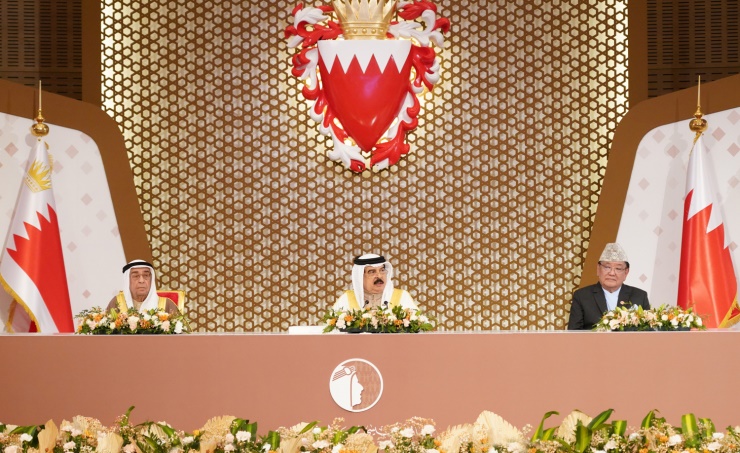
The Board of Trustees of the award committee then dispatched a field team to visit the locations of the five short-listed applicants to evaluate their conformity with the award criteria. The team started their trip at the Institute of Ophthalmology in Kathmandu and then went to the Hetauda Community Eye Hospital to look at the mobile field hospitals and met with Dr Ruit and his staff of doctors, nurses, and technicians.
They also visited the operating rooms for lens implantation at both stationary and mobile hospitals in different rural and mountainous locations, where they spoke with patients about the intricacies of their situations and got their honest feedback. According to the research team, their field proved that the innovative nature of Dr Ruit’s medical and humanitarian efforts is diverse.
“Every individual should do humanitarian work like Dr Ruit and previous laureates,” said Shaikh Mohammed bin Mubarak Al Khalifa, special representative of the king and chairman of the Board Trustees of Isa Award for Service to Humanity.
Dr Ruit is credited for developing a cost-effective lens as well as pioneering a new way of performing medical surgery that minimizes collateral damage and shortens the recovery period. To meet the demand for low-cost eyeglass lenses, Dr Ruit established a factory in his hometown that manufactures over 350,000 lenses each year. Whereas it costs $100 to make a single lens elsewhere, Dr Ruit’s factory distributes them for $3 each.
According to peer-reviewed scientific research, the lenses produced at Dr Ruit’s institute are of equivalent quality to their more expensive counterparts in the developed world, and their low cost is the outcome of the refinement of production processes and procedures over more than 30 years. Besides, Dr Ruit has also trained over 650 doctors from across the globe, who are now following his footstep in a fight against preventable blindness. They have conducted more than 35m surgeries so far.
Dr Ruit’s institute provides ophthalmic care to patients in Nepal in two hospitals and 16 clinics, staffed by around 30 doctors. There are medical professionals from all over the world, including in the United States, Africa, and several Asian countries. His new method for treating cataracts helped him in performing cataract surgeries in less than five minutes during which he removes the cataract without stitches through small incisions, and replaces them with a cost-effective artificial lens.
Dr Farhan Nizami, one of the jury members, said awarding Dr Ruit means recognizing the work of his institution and motivating others to work for humanity. “This award is a monument of hard work and it is proved by our laureate Dr Ruit,” he added.
Dr Sanduk Ruit: We will expand our services everywhere needed 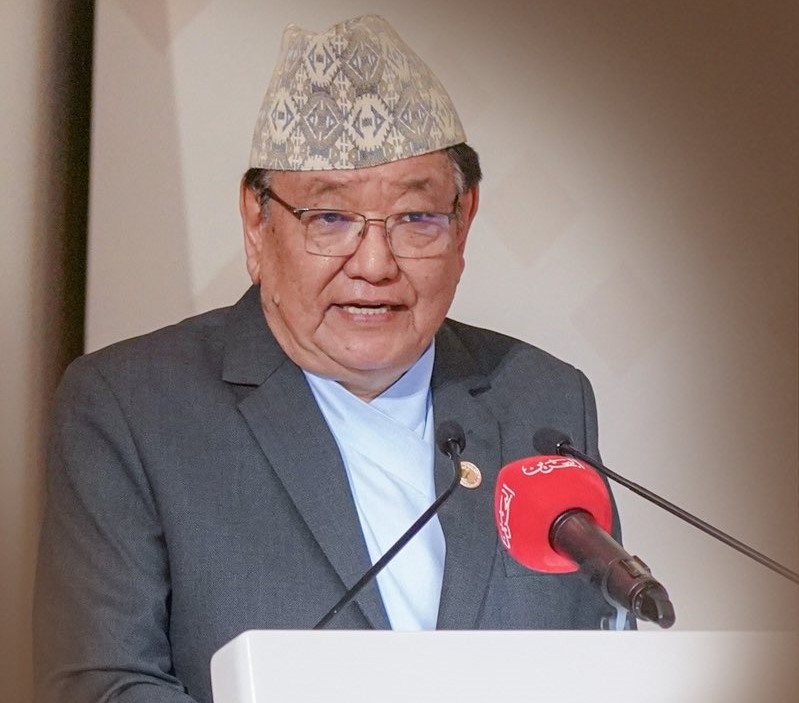
A short interview
What is the impact of the award?
Capacity building is one of the main impacts as this prestigious award facilitates us with more resources. The impartiality, inclusiveness and a serious attempt to find game changing humanitarian work even at a far-flung grassroots level is a motivation for everyone. I think this Isa Award is the most impartial among the large global awards. Without any political and geographical powers, these days, it is impossible to get such awards. So it has many such beautiful impacts.
What is your plan for the expansion of eye care service?
The prevalence of cataract in Nepal is high but we have taken care in the last decade. So we are moving to other countries too. Due to our good quality, even our neighboring countries' patients come to Nepal for the treatment. We will expand our services everywhere needed.
How sustainable is your treatment technique?
One of our main works is training doctors from rural areas. We pick up a few local surgeons and help them continue their work in the highest quality. So by passing our knowledge, we are making sure this treatment technique continues. Also, in 1989, WHO didn’t allow my team to conduct cataract surgeries, saying that these things need a high clinical trial. But to date, not a single patient has complained about our lens. So it’s sustainable for sure.
What are your further plans?
We are planning a mass treatment of 30,000 patients in Ghana and Ethiopia this year. We are committed to all people who can’t get quality healthcare services. We'll get everywhere soon.

Isa Award recipients
1st laureate-2013

Dr Tan Sri Jemilah binti Mahmood, a Malaysian physician became the first recipient of Isa Award for Service to Humanity for her efforts in disaster prevention and relief, education, community services, environment protection, climate change, and poverty alleviation. She is one of the rare Muslim women who have broken through the humanitarian world’s glass ceiling and helped redefine women’s roles and responsibilities. Her focus, passion, energy and experience—involving crises in places like Kosovo, Iran, Iraq, Palestine, Sudan, Afghanistan, Pakistan, Myanmar, Sri Lanka and Indonesia—have led to astounding results in the field.
2nd laureate-2015
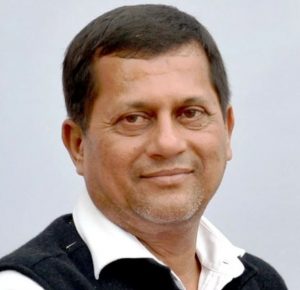
Achyuta Samanta is an Indian educationist and philanthropist. He is the founder of Kalinga Institute of Industrial Technology and Kalinga Institute of Social Sciences. His institute is regarded as a world-class university that caters to 25,000 children from the underprivileged tribal community. The institute was started with an investment of just IRs 5,000. His vision is to provide quality education and opportunities to the poorest of the poor indigenous tribal children, boosting their all-round development and empowering them with life skills so that they can successfully integrate into the mainstream. Dr Samanta was awarded for his relentless quest to help those languishing in abject poverty and for establishing a conglomeration of educational institutions.
3rd laureate-2017
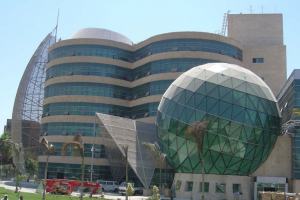
Children’s Cancer Hospital Egypt, also known as Hospital 57357 after its widely published bank account number for donations, is a hospital in Cairo specializing in children's cancer. With 320 beds, the building is the largest pediatric oncology hospital in the world. The hospital is a unique institution. It was built by donations, and even today, continues to operate and to be sustained through donations. It was established in 2007 with the goal of providing the best comprehensive family-centered quality care and offering a chance for a cure to all children with cancer seeking its services and it would be provided to them—free of charge and without any discrimination. The hospital is recording a 72 percent average over-all survival rate. It is more than a hospital but stands as a leading example for healthcare, a change agent and a comprehensive institution for fighting childhood cancer.
4th laureate-2019

Edhi Foundation is a non-profit social welfare organization based in Pakistan. In 1951, it was founded by Abdul Sattar Edhi, a well-known Pakistani philanthropist, ascetic, humanitarian, and social activist. He is known as the ‘Father of the Poor’ and ‘The Angel of Mercy,’ and has been constantly nominated for the Nobel Prize for Peace. He established a giant charity foundation that sponsored the building of maternity hospitals, morgues, orphanages, shelters and a nursing home. Until his death in 2016, he dedicated his life and that of all his family members to the service of people.
The Edhi Foundation has orphanages attached to primary and secondary schools; homes for the disabled, rejected and displaced children, and drug addicts; and shelters for abused women. There are also maternity centers, family planning centers, training institutes for nurses, blood banks, a tuberculosis clinic and a tumor hospital. The foundation runs 330 care centers in Pakistan’s rural and urban areas, providing food, shelter and rehabilitation for abandoned women and children, as well as medication for mentally ill patients. The foundation has provided relief work in Africa, the Middle East, the Caucasus, Eastern Europe and the United States (during Hurricane Katrina in 2005).
Dr Ruit honored with Isa Award
Manama (Bahrain): Renowned Nepali ophthalmologist Dr Sanduk Ruit was honored with the Isa Award for Service to Humanity amidst an event organized at the Isa Cultural Center in Manama, the capital of Bahrain, on Tuesday. Hamad bin Isa Al Khalifa, the King of Bahrain, handed the award to Dr Ruit.
“Dr Ruit deserved the award more than anyone,” King Hamad said. Shaikh Mohammed bin Mubarak Al Khalifa, special representative of the king and Chairman of the Board Trustees of Isa Award for Service to Humanity, said that every individual should do humanitarian work like Dr Ruit and previous laureates.
Dr Farhan Nizami, one of the jury members, said: “Awarding Dr Ruit means recognising the work of his institution and motivating others to work for humanity. This award is a monument of hard work and it is proved by our laureate Dr Ruit.”
Expressing his happiness, Dr Ruit said that he will be a great ambassador for this Isa Award. “I accept this prestigious award on behalf of millions of patients, their families, my team and the entire Nepalis whose goodwill and best wishes I bring to this distinguished gathering,” he added.
Earlier at a press briefing, on Feb 20, Minister of Information of Bahrain Ramzan bin Abdullah Al-Nuaimi said: “Nepal is often hailed as a country of kind people and this achievement of Dr Ruit has proved that.” The fifth edition of the award, which carries a purse of $1m, recognizes Dr Ruit’s contributions to human service through eye treatment. The award, established in 2009 by King Hamad, is granted every two years to either individuals or organizations selected through a grueling process by an expert panel of jurists.


